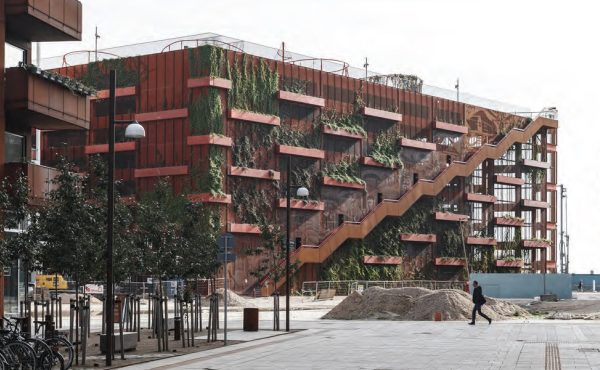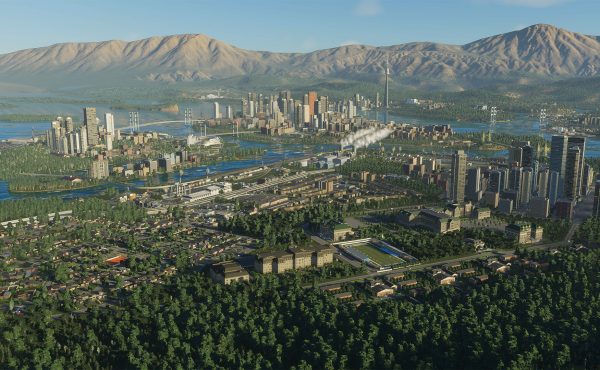

Every Thursday, Spacing will bring you a snapshot of Toronto’s past, looking into what took place that week in the city’s history. Throwback Thursday will address how the city has evolved, with an emphasis on issues that remain relevant for development in Toronto today.
– – – – – – – – – – – – – – – – –
On this day in 1897, the Toronto Maple Leafs Baseball Team played their first game at Hanlan’s Point Stadium. For 50 cents, you’d get a ferry trip to and from the island, along with a ticket to the baseball game. The stadium burned down twice, first in 1903 and then again one year after it was rebuilt in 1909.

Hanlan’s Point Stadium in 1907
The first ballpark featured a semi-circular grandstand and bleachers before caught fire on September 10, 1903. The stadium was rebuilt as Maple Leaf Park, opening in 1908 with 3,000 grandstand seats as well as covered bleachers seating 4,500 and uncovered bleachers fitting in another 1,800 spots. Sadly, only one year after it was built, it too burnt down on August 10, 1909, just fifteen months after Opening Day.
In 1910, a new stadium built on the same site opened with over 17,000 seats, the largest of its time for minor league baseball stadiums. It was in this stadium, on September 5, 1914 that Babe Ruth hit his first professional home run right into Toronto Bay as part of the visiting Providence Grays 9-0 victory. The Babe had also pitched a one-hitter.
By the beginning of the 20th century, Hanlan’s Point had become the “Coney Island of Canada,” complete with an amusement park that featured a roller-coaster called “The Big Scream,” diving horses, as well as three hotels and a summer recreation centre.

Hanlan’s Point Hotel and Regatta, 1907
Yet when the Maple Leafs Baseball Team left the Island after the 1925 season for the newly built Maple Leaf Stadium at the foot of Bathurst Street (apartment buildings have now been built at Queens Quay W and Stadium Rd in the shape of the former stadium, which was demolished in 1968), things began to decline. In 1927, Hanlan’s Point Stadium was deemed unsafe by the City Architect, leading to its destruction.
 With the Stadium gone, the Amusement park soon followed suit. It was similarly leveled in the 1930s to make way for the Island Airport, built in 1937. The construction of the Airport also led to the relocation of one of Canada’s first summer cottage communities that had formed on Hanlan’s Point. This led to 31 cottages being moved by barge to Algonquin Island, formerly known as Sunfish Island, which at the time was nothing more than a sandbar.
With the Stadium gone, the Amusement park soon followed suit. It was similarly leveled in the 1930s to make way for the Island Airport, built in 1937. The construction of the Airport also led to the relocation of one of Canada’s first summer cottage communities that had formed on Hanlan’s Point. This led to 31 cottages being moved by barge to Algonquin Island, formerly known as Sunfish Island, which at the time was nothing more than a sandbar.
Nowadays, Hanlan’s Point still continues to be an outdoor destination (the naturalists’ beach, The Island Natural Science School, the Island Yacht Club on Muggs Island, Gibraltar Point Lighthouse, the public parks, etc.) while also being home to more function-oriented buildings like the Island filtration plant as well as the still existing Island Airport.
Plaques can be found in a number of places around Hanlan’s Point describing other sites and stories associated with the Island.
Photos from the Toronto Archives and Metblogs




2 comments
It would be kind of cool if we were to allow a low-rise, up-scale hotel be built on the island again. People could take a beach vacation in their own city. The grounds would have to be open to the public though. I wouldn’t want to see a fenced in resort.
I lived in Toronto from 1957 to 1987 and never knew any of this. Just searching the internet for how Toronto, NSW, Australia got its name.
In response to Laurie, There are better beaches in Toronto, NSW, Australia.